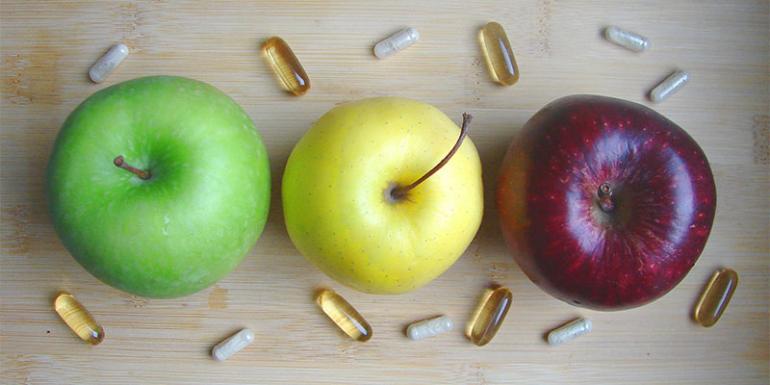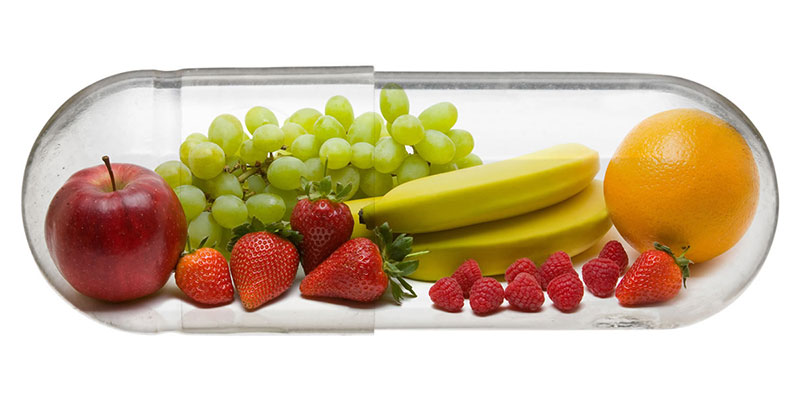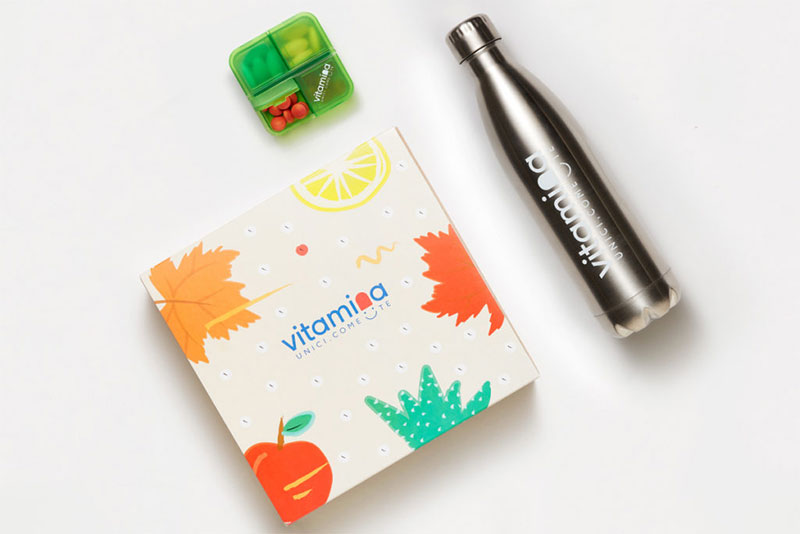Nutraceuticals: market and packaging

Market data, type of consumption, distribution and packaging of nutraceuticals. Within the EU, Italy ranks first both for consumption and production.
Barbara Iascone
Istituto italiano Imballaggio
In this issue we cover the area of nutraceutical products, i.e. those supplements that contain principles and substances capable of bringing benefits to the body, influencing physiological processes. These principles, naturally present in foods, vegetables, etc.., can be synthesized and enter into the composition of supplements, now commonly included in diets.
Taking nutraceutical products is useful to improve health but also, and above all, to prevent the onset of specific disorders. For example, they are useful in solving nutritional deficiencies in particular moments of life, and can be used for limited periods of time (when and only if some important nutrient is lacking).
Specific nutraceutical products are developed to:
- strengthen the immune system;
- regularize gastro-intestinal functions;
- support the body during physical activity;
- reduce the risks of onset of cardiovascular or degenerative diseases;
- delay the aging process;
- prevent chronic diseases;
- help improve certain body functions.

|
Pieces |
% |
|
|---|---|---|
|
Digestive/intestinal tracts |
69 |
26.00% |
|
Vitamins/minerals/food supplements |
71.6 |
27.00% |
|
Coughs/colds respiratory tracts |
23.9 |
9.00% |
|
Circulatory system |
15.9 |
6.00% |
|
Tonics |
12.7 |
4.80% |
|
Urology and reproductive system |
10.6 |
4.00% |
|
Tranquilizers |
13.8 |
5.20% |
|
Analgesics |
8 |
3.00% |
|
Products for losing weight |
5.3 |
2.00% |
|
Others |
34.5 |
13.00% |
|
Total |
265.2 |
100.00% |
Source: Quintiles Multichannel View Nutraceutica - Pharmaceutical, parapharmaceutical, retail channels
The main market
In Italy, the use of these products is growing steadily, so much so that we are in first place in Europe for production and consumption, reaching a market share in value of 27%.
In Italy, 97% of nutraceutical products are sold in pharmacies, parapharmacies and large-scale retail trade, while online sales are still marginal, although increasing.
According to the latest analysis carried out by Iqvia (a global information, innovative technologies and clinical research services provider), in 2020 in Italy the sector registered an overall growth rate of 5.7% in terms of turnover: in this sense, during the corona virus emergency, the increased attention to maintaining a good state of health played a major role, confirming the positive trend of the last five years.
A positive trend was also recorded in terms of quantities, with volumes increasing by 3.8%.
The spread of Covid-19 has therefore influenced not only our daily lives, but also the performance of the individual categories.

Vitamin and mineral products, together with immunostimulants, showed the most significant growth: together they increased in volume by 38%.
Products for sleep disorders (a problem that afflicted many Italians during and after the lockdown) also grew significantly: +28.8% in volume terms.
On the other hand, there was a drop in probiotics and specific products for joints, mainly due to the difficulty of dealing with the doctor in charge.
On the basis of the trends highlighted, nutraceutical products have been sold in Italy for a value exceeding 760 million euros. In quantitative terms, these values in 2020 translate into over 265 million packs, divided between different types of products.
The pandemic emergency that has characterized 2020 has also significantly influenced the use of online sales.
Especially during the periods of closures and forced distancing, this type of distribution has been by far the most used; in the pharmaceutical sector, we are talking about a growth rate of the channel equal to 66% and most of the increase is due to nutraceutical supplements since, in Italy, the online sale of medicines requiring a medical prescription is forbidden.
|
2016 |
2017 |
2018 |
2019 |
2020 |
|---|---|---|---|---|
|
231.6 |
241.1 |
246.4 |
255.5 |
265.2 |
Commodity and packaging breakdown
The product categories of this sector are divided according to the pathology and the apparatus on which they act: digestive and intestinal system; vitamin and mineral food supplements; respiratory system; circulatory system; tonics; urology and reproductive system; sedatives and sleeping pills; products to lose weight; other products.
According to elaborations provided by the Istituto Italiano Imballaggio database, the 265 million nutraceutical product packages for the year 2020 are divided between plastic/aluminum blisters for capsules or tablets (44%), followed by 34% of plastic bottles or jars.

With 16.3% we find glass jars and bottles; sachets in laminated material represent 5% of the packages and, lastly, we find aluminium tubes (0.7%).
These types of packaging are present in all nutraceutical sectors, from products supporting the digestive system to the cardiovascular one, going by way of food supplements. Rigid aluminum tubes are used in the packaging of vitamins, minerals, cough and cold products.
The percentages indicated above refer to primary packaging, in direct contact with the product, to which cardboard boxes (secondary packaging), closures and labels (accessories) should be added.
Again according to the Institute’s database, this market area generates over 12,400 tons of packaging (including closures, accessories and folding cartons).
|
% |
|
|---|---|
|
Plastic jars and flacons |
34.00% |
|
Laminated pouches (CA+ALL+PE) |
5.00% |
|
Rigid aluminium tubes |
0.70% |
|
Blister (ALL/PVC and ALL/ALL) |
44.00% |
|
Glass flacons both standard and small |
16.30% |
|
Total |
100.00% |
Source: Processising by Istituto Italiano Imballaggio on data by Quintiles Multichannel View Nutraceutica.
Packaging mix by product category
Digestive System. Products that support the digestive system account for 26% of the entire segment, down slightly in 2020 from previous years. Probiotics are included in this area. As far as the packaging mix is concerned, blister packs and plastic bottles, which together account for 76% of the market, predominate.
Mineral vitamins, dietary supplements. This category is very fragmented, both in terms of the type of products (simple mineral supplements, associated and combined with vitamins, antioxidants, etc.) and the customization of the offer (over 50, women, pregnancy, sport, children, etc.). Also in this case more than 72% of the packaging is represented by plastic bottles, jars and blisters.

Circulatory system. Products in this area essentially help the body fight cholesterol. In this market, the division between the different types of packaging used sees the prevalence of blisters, with 75% of the packages. The remaining 25% is divided between bottles and jars of glass or plastic.
Tonics and stimulants. This is the category that has been present on the market for the longest time. Within this segment, we find stress relievers, products that help improve sleep and natural calming agents. Blister packs account for 60% of the packaging, followed by plastic or glass jars and bottles.
Urology and the reproductive system. More and more urologists and gynecologists are treating urinary tract infections with supplements, so much so that the sector is seeing good growth rates in both volume and turnover in recent years. As regards the mix of packaging, over 60% is the prerogative of plastic/aluminum blisters, followed by plastic bottles and laminated sachets, respectively with 25% and 15%.

Coughs and colds. The sector is closely linked to seasonality. Word of mouth, advertising and personal tastes greatly influence the consumption of one product over another. Sharing the packaging mix are predominantly plastic bottles, glass bottles and blisters.
Future trends
Estimates state that the sector in 2021 should show further growth, with +2.5% in volume. Both the continuation of the Covid-19 emergency and the increasingly widespread awareness of the need to prevent, when possible, disorders will lead to more frequent use of these types of products.


















